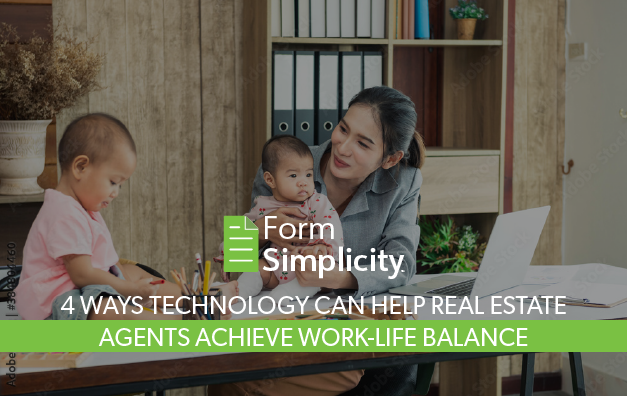
As a result of the COVID-19 pandemic, which has altered the way we work and school, homeowners have had to alter their home environment to adjust. Here are the top 10 design trends for 2021 that real estate agents have observed their clients adopt or request.
1. Earthy Colors to Bring the Outside Inside
The current color palettes for interior design are inspired by Mother Nature to bring calm and peace into the home. Green colors remind us of the earth, grass, and plants. Blues reflect the vastness of the sky and water. Yellows evoke a sense of sunlight and flowers. Popular tones such as white and beige feel natural and clean.
2. Natural Lighting and Oversized Windows
Say goodbye to heavy drapes and window coverings. Natural light makes us smile and feel happy. Folks are replacing, when possible, window coverings with electric blinds that remain open during the day or with sheer fabric to let the sunshine in. When possible, homeowners are also enlarging existing window spaces to allow for more natural light to enter the home. The benefits are numerous and include reduced home energy costs and a brighter living environment.
3. Creative Storage Areas
With both kids and adults spending more time at home, the demand for storage space is on the rise. The goal is to reduce clutter and create safe and open areas throughout the home to work and play. Creative designs include maximizing cabinet space within each room and using couches with storage space built in. Storage space also includes improved closet design and more efficient storage space within the garage or utility area of the home.
The use of off-site storage facilities is on the rise. By re-designing the space at home and getting rid of anything they don’t use, people hope to save the large, monthly, off-site rental costs.
4. Flexible Home Spaces
Home-based work environments are here to stay. One of the biggest frustrations real estate professionals hear from homeowners is the challenge of creating a place where they can focus and concentrate on tasks when working from home. It is also about having a dedicated area where kids can learn and study also.
The move to larger home spaces is growing as many people are moving out of city environments to single-family homes for the first time. In condos, apartments, and homes, homeowners are re-purposing guest rooms, garages, basements, and non-traditional areas as their new home office or study space.
5. Higher-Quality Indoor Air Ventilation
Having clean, indoor air is essential to one’s health. According to the EPA, even prior to the COVID-19 pandemic people spent 90% of their time indoors. The EPA also states that indoor air pollution can often be higher than outdoor air pollution. Ways to improve indoor air quality include opening the windows to allow air to flow throughout the home. Of course, this also depends on the time of year and the home’s location. Other options include upgrading the home’s air ventilation system, installing higher MERV-rated filters, and purchasing indoor air purifiers for certain rooms.
6. Home Bathrooms and Bidets
Having sufficient toilet paper had a whole new meaning in 2020. All across Europe and Asia, nations reduced their use of toilet paper for centuries, yes centuries, by using separate wash areas next to the toilet known as bidets. This fixture has not taken off in the United States due in many cases to lack of sufficient bathroom space. Now, it is taking off for many reasons: to reduce the need for toilet paper, to increase cleanliness, to save money, and to conserve the earth’s resources.
7. At-Home Gyms and Fitness Areas
Having an exercise or fitness area in the home is critical to relieving stress and staying healthy. With the growth of online virtual exercise and play classes, having a space with a large screen and room for a mat or fitness equipment is essential for many. One piece of equipment can be all that’s needed. Since there are only so many rooms in one’s home, screens can be hidden during the day or mounted and be part of the functional office area. That is subject to individual taste, of course. If there is the option of utilizing a porch area or basement, these spaces can also serve as gyms or fitness areas.
8. Utility Room for Shoes and Household Items
Every home begins with an entrance. This can include the front door, hallway, or garage. For 2021, these are being re-designed to allow for grocery and parcel delivery, as well as to take off one’s shoes before entering the home. Some families are utilizing space, when available, in the utility room to remove shoes and accept packages. In some areas of the country, this is also called a “mud” room.
9. Smart Thermostats
The driving factor for the increased use of smart thermostats is to lower maintenance costs. The demand is driven as more and more people are working from home and as kids and young adults shifted to learning from home. Smart thermostats are convenient and provide home dwellers the ability to review their energy use room by room. This can result in lower, monthly energy costs. Plus, with Wi-Fi capability, users can track their home’s energy usage while at home or on the road.
10. Smart Voice Activation
Technology has come a long way. And now, with the simple use of our voice, we can activate many features in our homes when using a smart hub.
Say goodbye to pressing buttons. Voice automation is here and growing exponentially. With the help of Wi-Fi, we can use voice activation for the entire home through a hub. Touchless voice activation actions include opening the front door and turning on and off lights, television screens, faucets, water heaters, and pool pumps. Managed with providers such as Amazon, Apple, and Google Home, this technology can also create a significant reduction in home energy costs.
Beyond the Home
All the items above contribute to coveted real estate. And as you take stock of the way home environments are evolving, consider also the tools you use to get clients into their new homes.
The demand for change is not only taking place in living spaces. Are you providing safe, technology-driven transaction management solutions to your clients?
It’s an increasingly digital business and with Form Simplicity, all your client’s transaction information can be managed in one place along with all necessary documents. No more searching for documents across multiple platforms. Form Simplicity also offers the ability for you and your clients to e-sign via smartphone or computer. Check it out today!
Written for Form Simplicity by Janice Zaltman, a Realtor, LEED AP, Marketing Coach and Writer with more than 20 years of experience in the sales, marketing and media fields.




